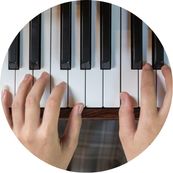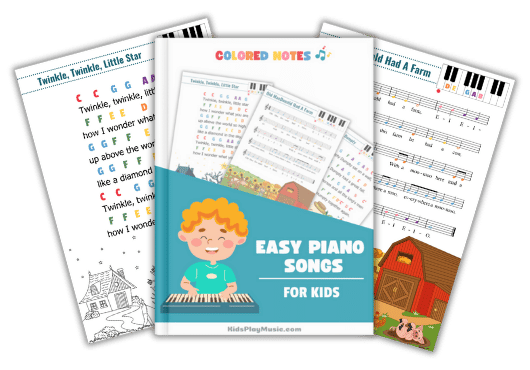Sure, learning first the piano notes is one of the first step for beginners! But learning piano chords is an essential step when you want to play the piano with both hands. And using a piano chords chart can be one of the easiest and most effective ways to get started. For beginners, understanding how chords work and being able to play them from memory can feel a pretty challenging, but a good chords chart can make this process much easier. In this article, we’ll walk through how to use our piano chords chart and provide you the free PDF printable that you can use your piano lessons!
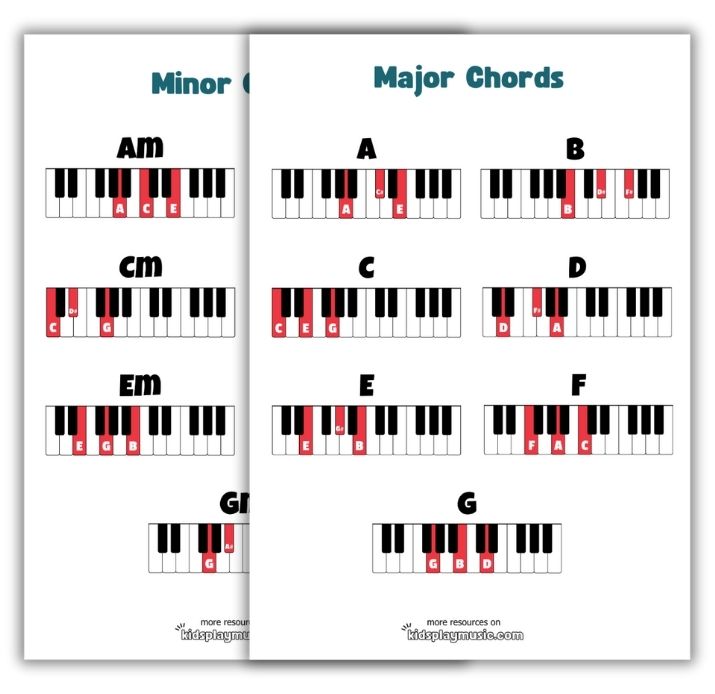
Why to Use a Piano Chords Chart?
Quick reference for beginners
When you first start out, or especially for children, it can be a challenge to remember all the chords and their shapes. A chord chart serves as a quick reference, allowing beginners to look up chords without having to read complex sheet music. With a chords chart you have all the basic chords at one place. That’s why we put only major and minor chords, which are the most frequent chords when you play beginner piano songs.
Visual learning aid
For many students, seeing the chord structure visually can be much more effective than just hearing it. The keys you need to use for a chord are highlighted in red, and you can immediately see the shape of the chord. This is much more obvious than just showing it directly on the piano.
A building block for other skills
Learning chords isn’t just about the individual chords themselves; it’s also about laying the foundation for skills like improvisation, songwriting, and understanding harmonic structures. By using a chord chart, you can begin to recognize patterns, which is invaluable for more advanced musical techniques down the road. Chords are the building blocks of harmony in music, adding depth, mood, and structure to a song. And if you master the basic chords, trust me you can really improve any songs.
How to read a Piano Chord Chart?
A piano chord is a combination of notes played simultaneously to create a harmonious sound. Each chord is built around a root note and has additional notes that follow certain intervals, creating different types of chords such as major, minor, diminished, or augmented.
Let me explain a chord diagram using C major as an example.
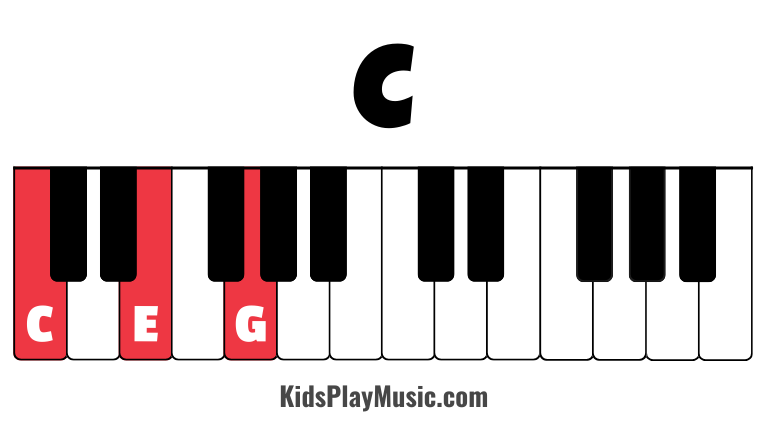
The root note is the primary note that the chord is built upon. For C major it’s the note C. The other notes in a chord are spaced according to specific intervals from the root, which give each chord its unique sound. For the C major chord you need to play E and G note. If you play all three notes (C-E-G) together you have the sound of a C major.
How to Practice Piano Chords
If you learn all the chords of our piano chords chart, you will be covered for many songs! First of all, learn them individually and try to memorize them so that you can find the finger positions for each chord on your keyboard without looking at the chart.
You don’t need to learn all the chords at once. Take the C chord at first and then the G and F chord. With these three chords you can already practice chord progressions, which will be the next step. You will have to change between different chords and for most of the beginners this is the challenging part and it surely requires some exercise. You won’t master it in one day but keep practicing each day a bit.
So, try to to play the following sequences:
- C-G-F
- C-G-C-G-F
If you master that you can already play songs with these chords! The very well-known melody Ode to Joy uses these chords. Try to play the song, you can find the piano notes and chords progression for that song on our site.
Piano Major Chords
For most of the popular songs you will be fine with major chords. Major chords are the ones that sound “happy” and they are built on the first, third, and fifth note of the major scale.
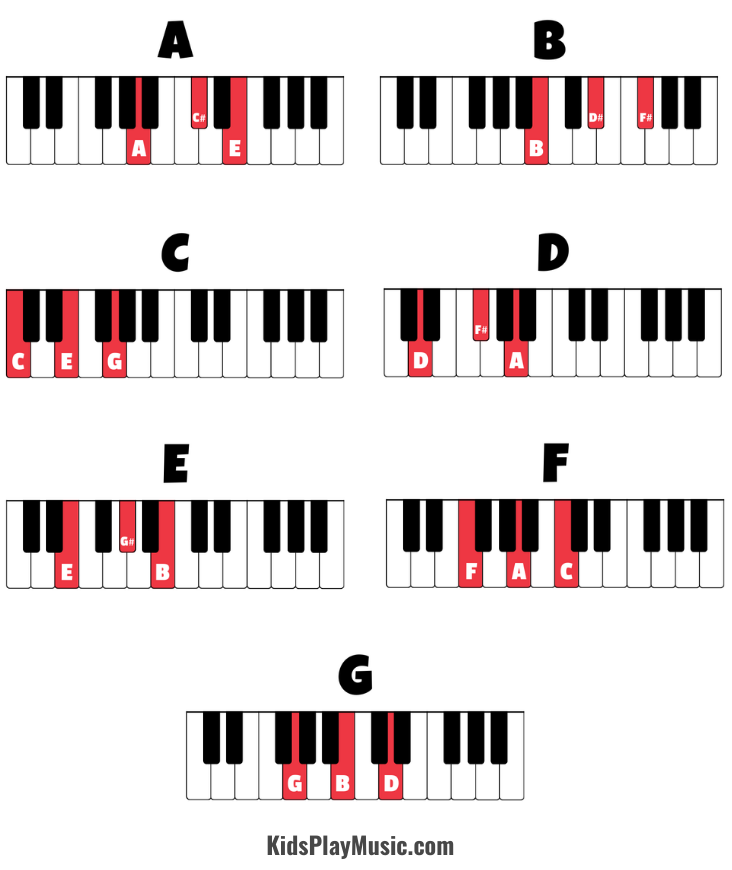
Minor Chords for Beginners
Minor chords are the ones that sound “sad” and they are built on the, first, flat third, and fifth note of the major scale.
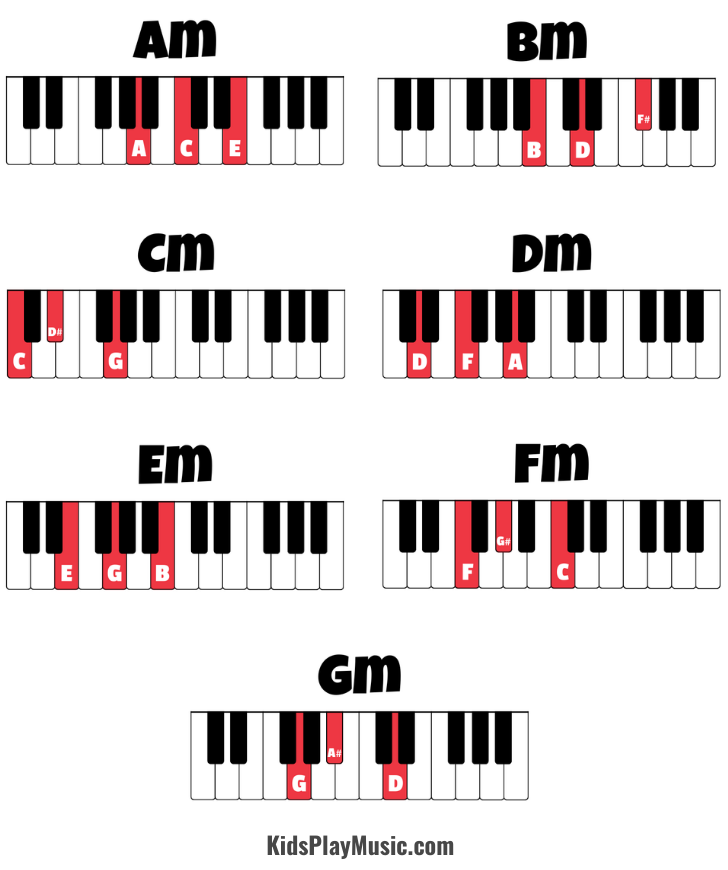
Piano Chords Chart Printable PDF
You can download our PDF printables with the major and minor chords for beginners! Feel free to them for your praciticing at home our during any piano lessons. You can also share them with other teachers!

Make sure to check out also our free printable for learning and teaching all piano notes.
